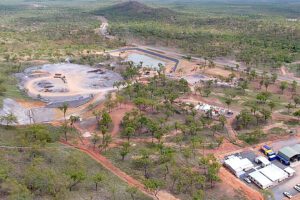Gender in mining: The story so far Discussions on gender in the mining industry have been limited to the under-representation of women in the workforce and the “glass ceiling” many women encounter. In response, we now see special award ceremonies and luncheons to honour and support the women who have “made it”. The debate so far has been about women and gender, gender and women. There’s been somewhat of a convenient assumption here that gender has nothing to do with men.
And yet, 85 per cent of workers in mining in Australia today are men. Many different research methods have also been used to investigate the relationship between gender and risk, with the conclusions always showing the same result: men take more risks than women. If we knew of any other reason why 85 per cent of our employees were more likely to engage in at-risk behaviours while at work, I think we would be doing a lot more.
So what is it about gender that makes dedicated and sustainable action so difficult? And why do we tend to ignore men in the debate?
Being a “real man” in the mining industry
Despite the rise in popularity over the past decade of the groomed-to-perfection “metrosexual”, the Rambo culture of invincibility and destruction remains strong. From an early age, boys still learn that displays of strength will help them avoid ridicule and that they will be more accepted if they have big muscles, can cope with pain, and are able to compete and win. Australia is a culture which celebrates acts of larrikinism but where larrikinism can often tip over into bullying and abuse.
This desire to be the perfect man does not end when boys exit the playground. Many men continue to try and prove their manhood on the streets, in their homes and in the workplace. “Real men” certainly don’t go into nursing or education. But they do go into mining. It’s here they have more opportunity to be surrounded by men, live in isolation, play with big toys, earn a lot of money, get dirty and build stuff.
As a result of the culture we live in, many men view requests for assistance or displays of fear as signs of weakness. They find it hard to seek help when it comes to issues affecting their own health. They don’t see how a few knocks, scratches and cuts to the body really matter. In fact, these injuries can often serve to initiate them into real manhood; they are their gender scars.
Caring about his body might result in a man being called names that seek to undermine his manhood: princess, poofter, pansy. Showing emotion might expose him as a bit of a “girl”. As a means of proving himself to be a real man, he may even be inclined to bully those he sees as weaker than himself, participating in the verbal and sexual harassment of his female and male colleagues. This is one way he can avoid being the object of ridicule himself.
He may even believe that it takes an aggressive and dominating person to be a success. And he may see this to be the truth when he looks at the attitudes and behaviours of his workplace leaders.
This “real man” model – whether played out by men or women – is certainly not agreeable with the safety standards demanded by many mining companies today. But these same mining companies often encourage this kind of man. We expect our employees to reflect and look after each other, while simultaneously allowing practices of gender to drive at-risk and aggressive behaviours. We may even find that we participate in these kinds of behaviours too. After all, they appear to be normal – they are exactly what we would expect of a man.
Tackling the impacts of gender
In social contexts where it has been recognised that gender has an influence on behaviours, we have seen the development of targeted solutions. For road safety, there are advertisements aimed specifically at young men, utilising images and language that resonate with them. In sport – particularly where we see evidence of disrespectful behaviour being exhibited towards women by players off the field – peer-mentoring programs are helping change the way “mates” respond to each other’s public behaviours.
In the mining industry, the training programs currently used to address gender issues generally make only vague references to discrimination and workplace sexual harassment. In my experience, the strategies for dealing with gender are rarely planned, and the result is that little gets done. Many companies may have a vision or a cultural value that makes some reference to diversity. But few have a plan to ensure this vision can become a reality. They lack awareness of how to integrate gender diversity throughout their operations. They simply do not understand the importance of “mainstreaming” gender to ensure it is not just a sideline topic of little relevance to the workplace.
I have witnessed gender-related issues being handed over to a 17-year-old vacation student who uses Google as her only aid to find resources about gender in the workplace. I have heard a mine manager inform his leadership team he wants 30 per cent of its positions filled by women within two years. He gave no rationale for this decision. He miraculously expects all the sitting male members to support it without dissent. And he naively assumes that one of the positions could never be his.
Mining companies simply do not have the tools and resources they need to be able to tackle all the gender issues that affect their work sites where the majority of their employees are men. They are unlikely to have all the internal expertise they need to tackle gender seriously. So they may simply default to finding a woman – usually a woman working in HR – who they assume knows everything about gender simply because she’s a woman.
The existing culture of the mining industry makes it difficult for employees – and particularly those who make the decisions – to admit they don’t know what to do. I have attended hundreds of meetings at senior management level and not once have I ever heard a manager admit ignorance! To the contrary, I have witnessed too many managers make rash decisions on issues they know nothing about. They do this to show their strength.
But I have also been surrounded by 100 underground miners, listening to them scream abuse because their manager has introduced me as somebody who can teach them how to be “better men.” One man declared: “You try to change us and we’ll walk.” This occurred at a place where a man approached me with tears in his eyes to confess he had not hugged his wife in years because of the impact the workplace culture was having on him. Another man screamed abuse at the “women” who had failed to fill up the coffee pot. It occurred in the same place that had witnessed a fatality only six months before.
An issue to be taken seriously
In our research and site-based work to date, we have been able to test some innovative solutions to gender issues facing the mining industry. The solutions have not always been perfect. But we have learned a lot about tackling some very sensitive issues, all of which relate to what it means to be a man working in a male-dominated environment like mining.
The mining companies most likely to see an impact on their safety culture are those that will avoid seeking quick-fix solutions. Senior leadership need to understand that you cannot put a group of men in a room for a “two-hour workshop” and expect they will emerge behaving differently.
But senior leadership needs to also understand that the link between gender and safety is very real. Despite the fact that there is a clear recognised link between safety and gender, it’s shocking that gender is not at the heart of training for safety professionals. There needs to be a commitment, therefore, to provide skills for safety personnel so they can integrate a focus on gender into their daily work.
Companies need to pay attention to how their business systems and processes, recruitment strategies, internal communication methods, and even the physical design of their mine sites contribute to the development of a gendered culture in which not all seemingly “normal” gendered behaviours are considered safe.
To achieve the next quantum step in mine safety, the mining industry needs people who are tough enough to be able recognise their own vulnerabilities. It needs workers who understand the limits and fragility of their bodies and who understand the connection between what it means to be a man in this world and what it means to stay safe.
Tips for addressing gender issues on mine sites
Conduct a gender review. Use an established methodology to help identify areas of strength and weakness when it comes to mainstreaming gender throughout your business. This kind of review usually involves conducting interviews, completing document reviews and holding focus groups with key personnel to reveal what needs to be done to ensure your company offers a gender-fair workplace.
Pilot a gendered behaviours mentorship program with a few crews or workplace teams on your mine sites: this approach has proven to work exceptionally well with male sports teams. It is a focused attempt to help men forgo assumptions about gender and to find newer and safer ways of behaving.
Provide participatory training for safety personnel to ensure they understand the link between gender and safety. They will then be better equipped to recognise and respond to at-risk behaviours in the field.
Encourage your leadership team to engage in some awareness training and to learn about how gender impacts the workplace. This is not a solution, but it is an important way of fostering dialogue.
Dr Dean Laplonge
Dr Dean Laplonge is a leading researcher in the field of gender in male-dominated contexts. Through the cultural research consultancy Factive, he heads up the “Mining for a Safer Masculinity” project. Laplonge continues to work with mining companies and industry bodies throughout Australia and Canada to address gender issues in the mining industry. He currently also holds an Adjunct Senior Lecturer position at the University of New South Wales.














Add Comment